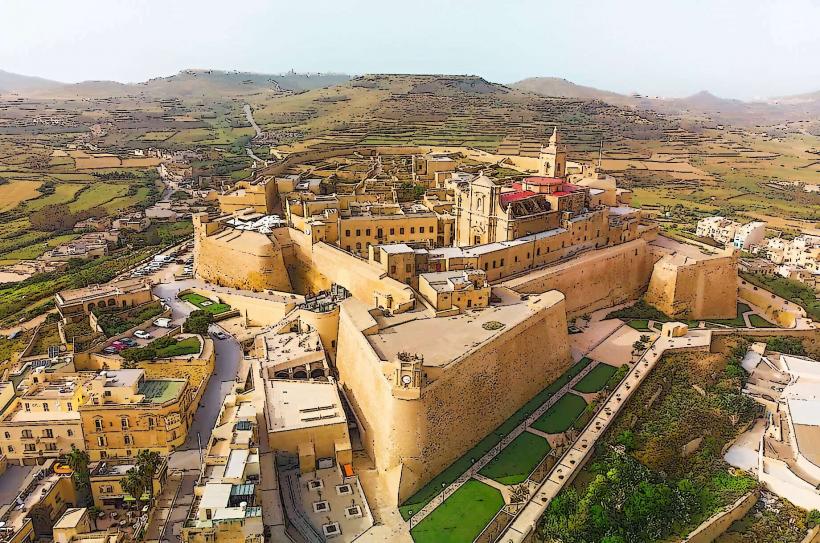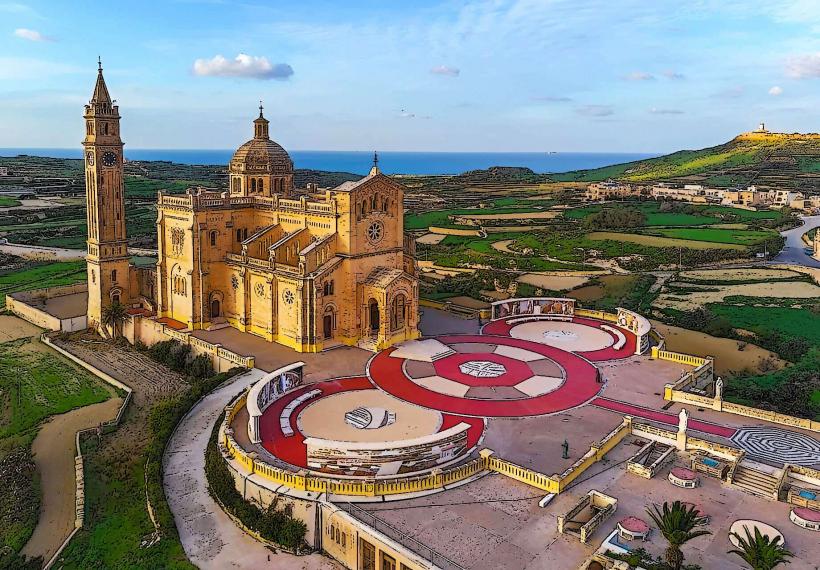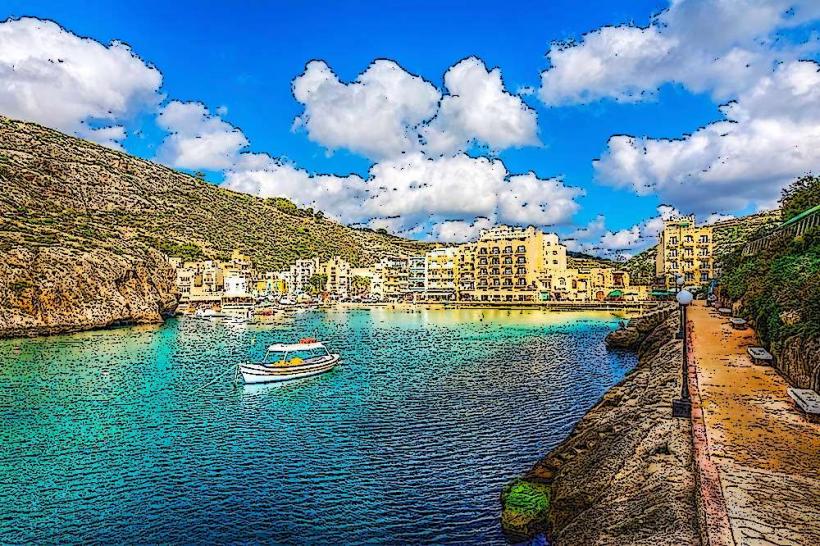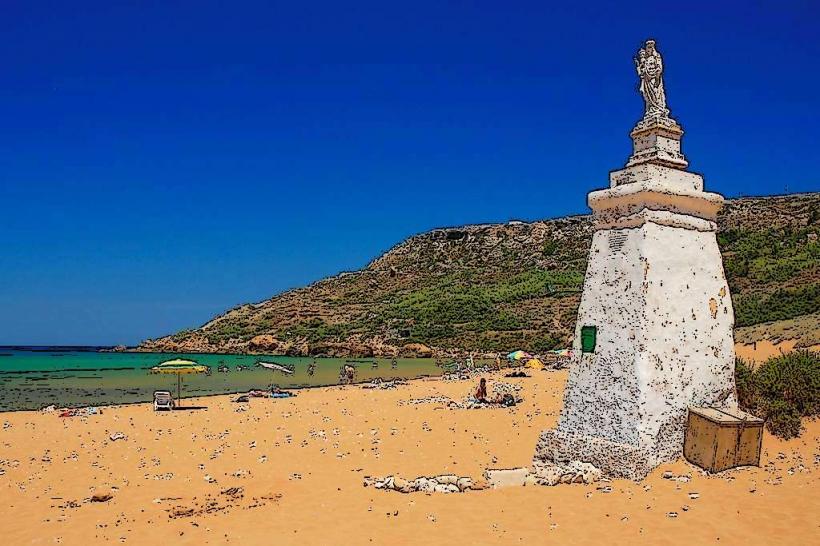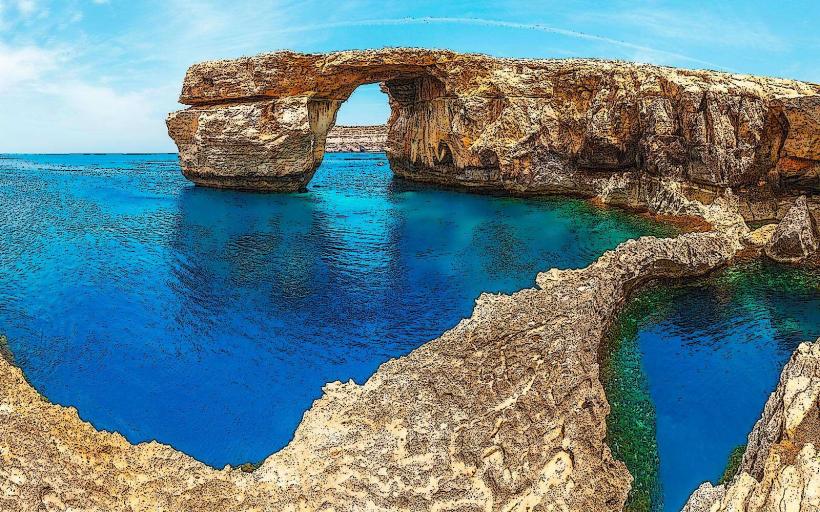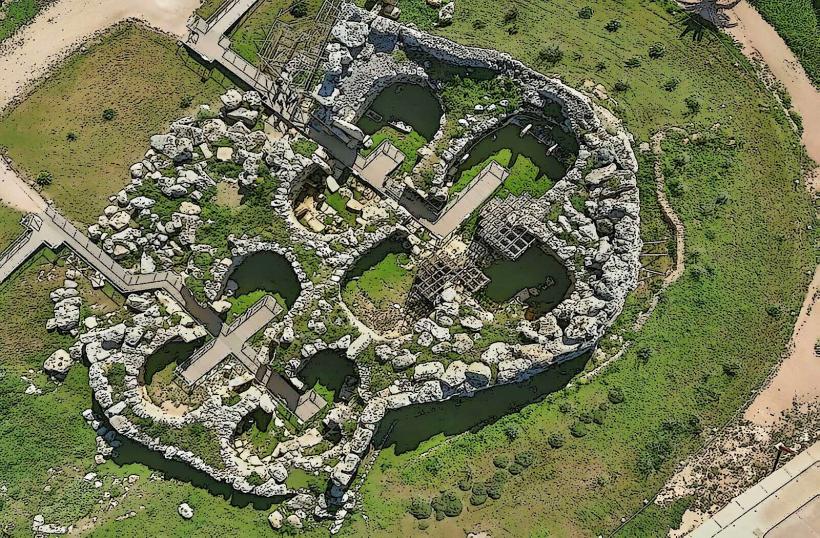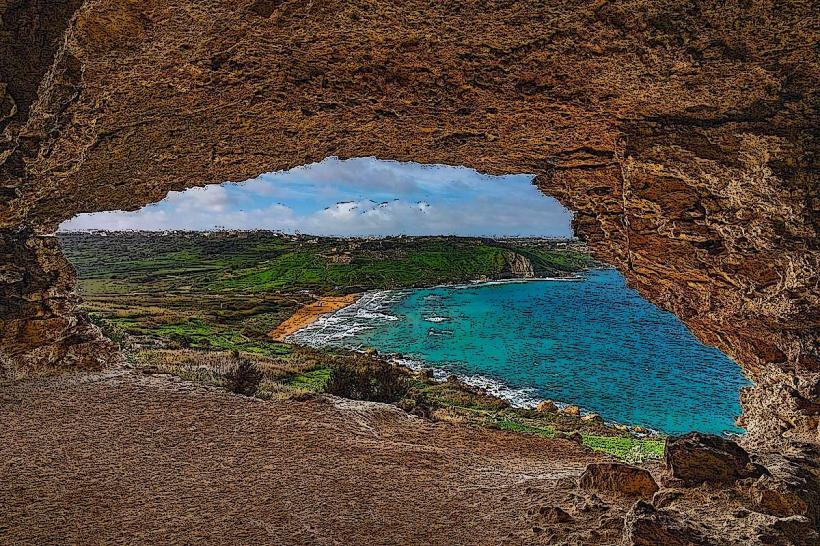Information
Landmark: Marsalforn Salt PansCity: Gozo
Country: Malta
Continent: Europe
Marsalforn Salt Pans
The Marsalforn Salt Pans are a notable natural and cultural feature located in the northern part of Gozo, Malta. Situated near the popular seaside town of Marsalforn, these salt pans are a traditional site for the production of sea salt, which has been harvested in the area for centuries. The salt pans not only represent an important aspect of the island's heritage but also provide a striking visual landscape that draws both locals and tourists.
Geographical Location
- Location:
- The Marsalforn Salt Pans are located along the coast near the village of Marsalforn, which is one of Gozo’s most popular resorts. The pans stretch along the coastline near the Xwejni Bay area, offering a scenic view of the Mediterranean Sea and the rugged coastal terrain.
- Xwejni Bay, with its clear blue waters and rocky shoreline, is a key part of the area and contributes to the picturesque setting of the salt pans.
Historical Significance
Salt Harvesting Tradition:
- The Marsalforn Salt Pans have been used for salt harvesting since ancient times. The tradition dates back to the Phoenician period (around 1000 BCE) and has continued through the Roman and medieval periods. Salt was historically an important commodity for food preservation, and the salt pans of Gozo were an essential part of Malta's salt trade.
- The practice of salt farming in Gozo is believed to have been passed down through generations, and although it has declined over the years, it is still carried out by a small number of local families today.
Roman Influence:
- Evidence of salt production in the region can be traced back to Roman times, and the techniques used for salt extraction in Gozo were advanced for their time. The Romans utilized the area for industrial-scale salt extraction to supply both local and international markets.
Salt Pans Today
- Structure and Process:
- The salt pans are shallow, rectangular or square-shaped pools that are carved into the natural rock along the coastline. These pans are filled with seawater, which is left to evaporate under the hot sun, leaving behind crystallized salt.
- The harvesting process involves allowing the sea water to flow into the pans at high tide, then using the natural evaporation process to concentrate the salt, which is later collected by hand.
- Preservation of Traditions:
- While salt production in the area has greatly reduced, a small number of families continue the tradition of harvesting sea salt, keeping the practice alive. This artisanal salt is highly valued and sold locally, with some also used for culinary purposes or for its potential health benefits.
Tourism and Attractions
Scenic Views:
- The Marsalforn Salt Pans offer a stunning view of the Mediterranean coastline, with the pans themselves creating an interesting and unique landscape. The pattern of the salt pans, their reflective surfaces, and the backdrop of the sea make the area an excellent spot for photography, especially at sunrise or sunset.
Accessible Location:
- The salt pans are easily accessible from Marsalforn, which is a popular tourist destination in Gozo. Visitors can walk along the coast or take short trips to explore the pans and enjoy the natural beauty of the area. The location is also close to other attractions in the region, making it a great stop for those exploring the northern coast of Gozo.
Educational Opportunities:
- While visiting, tourists can learn about the traditional process of sea salt harvesting. Occasionally, local guides offer tours or demonstrations, sharing insights into the history, techniques, and environmental importance of the salt pans.
Salt and Local Products:
- The salt harvested in Marsalforn is sold locally and can often be purchased directly from the salt farmers. It is commonly marketed as "Gozo sea salt" and is known for its purity and mineral content. Some artisanal salt products include flavored salts, often infused with herbs or local spices, which make for great souvenirs or culinary additions.
Nearby Attractions
Marsalforn Bay:
- The nearby town of Marsalforn is a popular destination for swimming, dining, and enjoying the beautiful bay. The area is well-known for its sandy beach and calm waters, making it ideal for families and those looking to relax by the sea.
Xwejni Bay:
- Xwejni Bay, located close to the salt pans, is a lovely spot for walking, swimming, and enjoying the views of the pans and the coastline. It is often less crowded than other parts of Gozo, offering a more tranquil experience.
Qbajjar Bay:
- Situated nearby, Qbajjar Bay is another peaceful location where visitors can explore the coastline and enjoy the sea. It is a great spot for those seeking a quieter, more secluded experience.
The Fungus Rock:
- Located a short distance away at Dwejra Bay, Fungus Rock is an iconic landmark in Gozo and can be combined with a visit to the salt pans for a full day of sightseeing.
Dwejra Bay:
- Known for the famous Azure Window (which collapsed in 2017), Dwejra Bay is a stunning area to explore, offering a rich combination of natural features including a lagoon, cliffs, and underwater caves.
Best Time to Visit
- Seasonal Considerations:
- The best time to visit the Marsalforn Salt Pans is during the spring and autumn months when the weather is pleasant, and the temperature is comfortable for walking and exploration. The summer months can be hot, and while the salt pans are still accessible, visitors should be prepared for high temperatures.
- The salt pans are particularly striking after a rain, when the pools collect water and reflect the light, offering a unique view of the landscape.
Conclusion
The Marsalforn Salt Pans offer an interesting glimpse into Gozo’s rich cultural and natural history. Whether you are interested in the traditional craft of salt production, the geological formations, or simply the beautiful scenery, the area provides a peaceful and rewarding experience. With its combination of natural beauty, historical significance, and unique coastal landscape, the Marsalforn Salt Pans remain an important and charming part of Gozo’s heritage.

